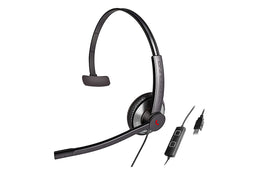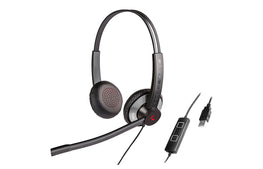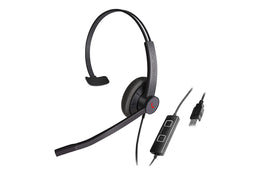
How to prevent the burnout of Australian Doctors?
98% of clinicians say they’ve experienced burnout feelings. But how would they prevent it?
In this new study, HIMSS and Nuance explored the impact on clinicians in several countries around the world. It found that—while causes and levels may differ—clinician burnout is an almost universal experience.
98% of those who participated in Nuance and HIMSS’ online survey said they had experienced feelings of burnout. When asked about the impact of COVID-19 on exhaustion or overload, 88% of respondents agreed it had exacerbated the issue.
HIMSS also conducted telephone interviews with doctors and nurses in 10 different countries, seeking to better understand their perspectives on burnout, its root causes, and its potential solutions.
We share some of the key findings below, but to explore the clinician’s responses in-depth—and get HIMSS’ conclusions and action points.
What drives clinician burnout? What the clinicians said…
From a lack of control over their working days, to payment models, the clinicians that HIMSS surveyed identified a broad range of factors contributing to the build-up of stress and professional overload.
It’s this stress and overload that, when excessive and persistent, lead to the symptoms we associate with clinician burnout—feelings of exhaustion, increased mental distance from one’s job, reduced professional efficacy.
“COVID has obviously massively increased the level of stress and work that clinicians have had to do.”
Dr. Afzal Chaudhry, Director of Digital, Cambridge University Hospitals NHS Foundation Trust, UK
One key factor highlighted by HIMSS research is the scale of healthcare workloads. A study of employees at the University of Zaragoza in Spain has associated weekly workloads of over 40 hours with a greater risk of “frenetic” burnout; 88% of the doctors and 43% of the nurses involved in Nuance and HIMSS’ online survey stated that they were exceeding this threshold, in an environment that, unlike academia, features the stresses concomitant with preserving human life and wellbeing.
Long working hours are much more common in some parts of the world than others. Doctors in Belgium and The Netherlands reported the longest weeks, with 67% of respondents working more than 40 hours. 47% of the surveyed nurses in France and 45% of those in Germany are also pushing themselves beyond this limit. Even in Australia, where surveyed nurses were least likely to report such excessive workloads during the pandemic compared to other regions, one in five nurses worked more than a 40-hours a week.
Documentation loads also significantly contribute to exhaustion and burnout with this reported by 82% of all participating doctors and 73% of all participating nurses. This finding comes shortly after the Journal of the American Medical Informatics Association published an article linking clinician burnout to increased documentation, following the adoption of the EHR in the US.
“There is so much paperwork when an operation is being carried out and I really think the software needs to be improved to make administration easier.”
Dr. Esther Bloemheuvel, Clinician in training with a residency in orthopedic surgery, Sint Maartenskliniek, the Netherlands
What prevents clinician burnout? What the clinicians said…
HIMSS also asked the clinicians what could be done to help prevent burnout amongst healthcare professionals.
The full reports examines ten different factors that reduce the risk of burnout. Here are just three, with sample responses from the clinicians:
- A collaborative leadership style — “You need a management team that listens, shares information, gives acknowledgement, and offers training. You need the right equipment and good logistics,” said Nicole Mercier from France.
- Reliability of workplans — “For nursing staff, reliability in the duty roster is what counts above all—not always having to fill in at night because someone has fallen ill. This creates a lot of stress,” answered Prof Christel Bienstein from Germany.
- Efficient administrative processes —“Invest into digital tools and processes to streamline bureaucracy, e. g. reduce the documentation workload,” states Dr Clair Sullivan from Australia.
HIMSS also observes the perception of information and communication technology in healthcare, quoting clinicians on its ability to “reduce stress” and “cope with the tasks ahead.”
It must be the right technology, introduced at the right time, with the right training. Summarising respondents’ sentiments, HIMSS notes, “Technology must address a specific issue and create an imminent value; it ultimately must stand the test of whether it improves working conditions.”
When a new technology passes this test, the benefits are felt by clinicians and patients. As one clinician put it, “Technology helps clinicians reduce stress and be present with their patients, which helps strengthen the therapeutic relationship.”
“It [technology] has huge potential to reduce the burden of time spent on routine-based and documentation-based tasks. This gives clinicians more time to focus on the most essential task: providing help and guidance to their patients.”
Lene Søvold, Clinical Psychologist, Mental Health Advisor, Sweden
Action points for reducing clinician stress
HIMSS concludes its study with a set of clear action points for healthcare organizations:
- The full list of factors that drive and prevent burnout, according to clinicians across the world
- Research into the impact of COVID-19—including data on the use of remote consultations
- Insight into new technologies like Dragon Medical One Cloud that promise to lighten clinician loads
Survey methodology: Nuance Communications commissioned HIMSS to survey clinicians in nine different countries, between November 19, 2020 and February 26, 2021. 443 clinicians participated. 416 clinicians from Australia, Belgium, Denmark, France, Germany, Norway, Sweden, and The Netherlands responded to an online survey.






